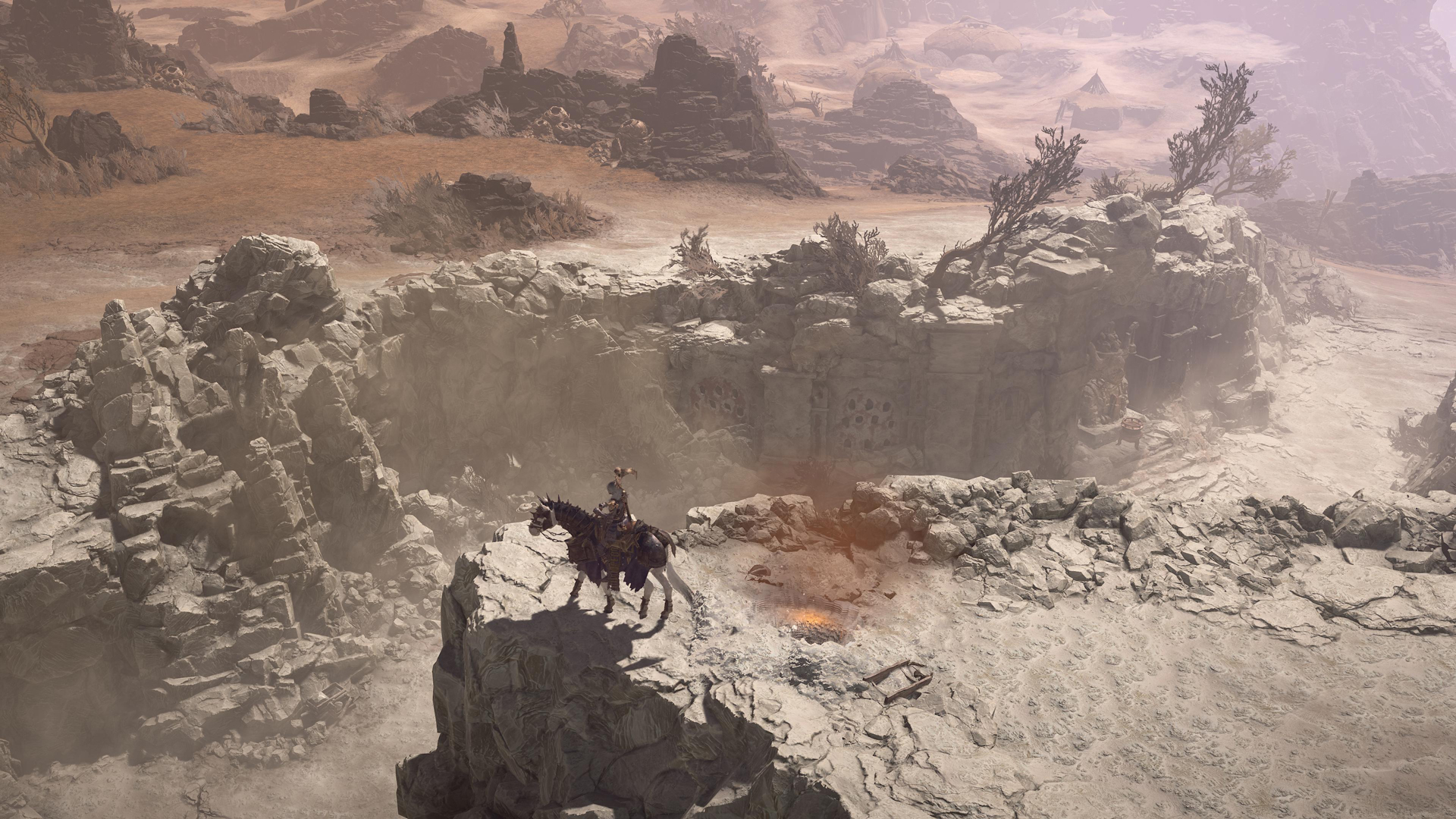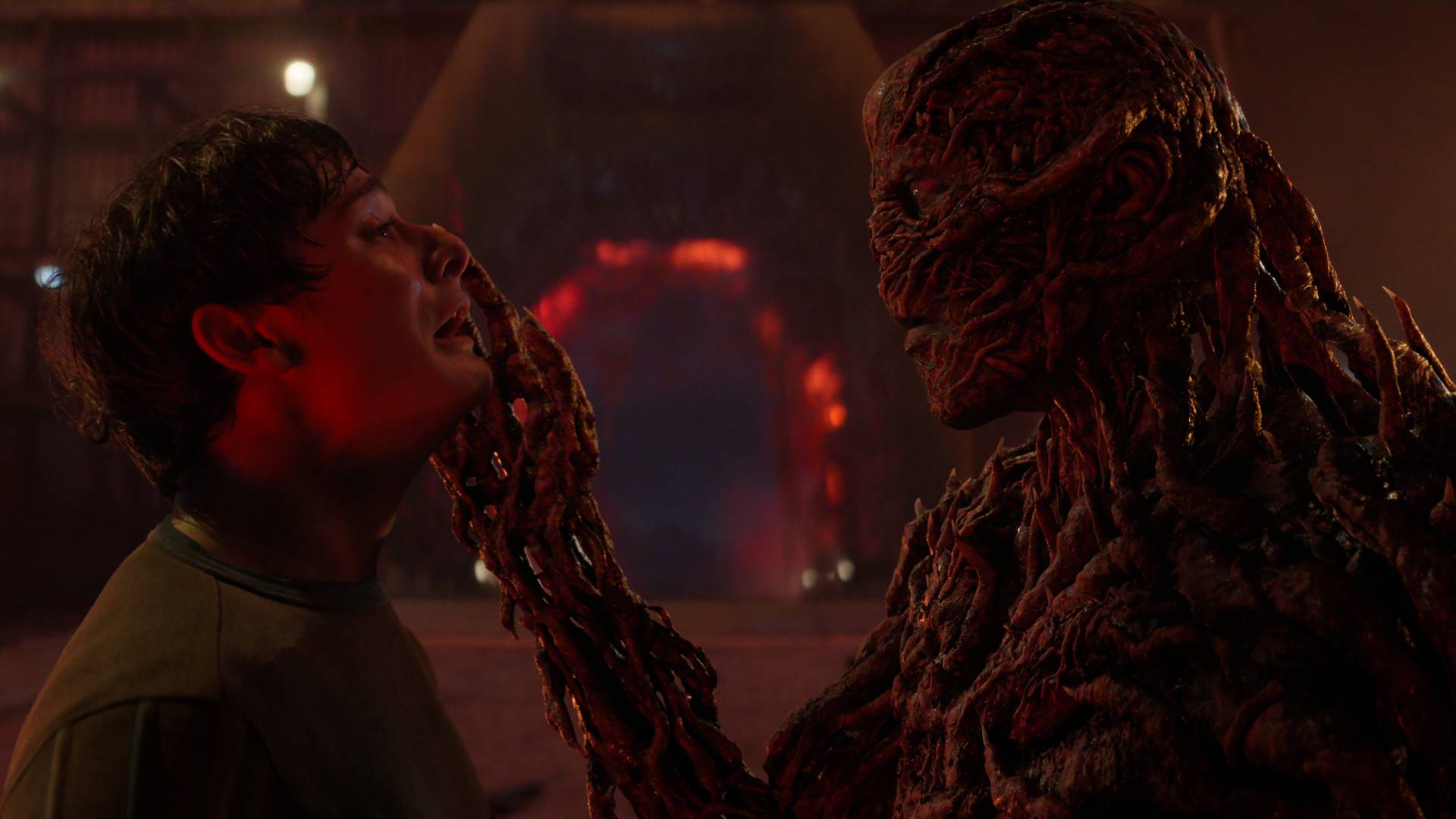GamesRadar+ Verdict
Diablo 4 is a diabolical assault on the senses. Sharp refinements to combat, gear, and loot systems make this one of the best action-RPGs in years, and the expressive open world shows there's still room for Blizzard to expand on the core Diablo concept.
Pros
- +
Wonderfully deep combat
- +
Expressive open world
- +
Impossible to put down
Cons
- -
Weak tutorials
Why you can trust GamesRadar+
Diablo 4 consumes time like a Necromancer does corpses: ravenously, and without repentance. It's stunning, really, that Blizzard Entertainment has found a way to pull this same trick for a fourth time. That the studio has found another ingenious way to conceal a surprisingly simple, destructively compulsive cycle. While attention may be easily drawn to the sprawling shared-world of Sanctuary, and the visually captivating design encasing it, behind the spectacle is something almost primal: a click to move, a click to kill, and a click to loot; repeat until daybreak.
Developer: In-house
Publisher: Blizzard Entertainment
Release date: June 6, 2023
Platform(s): Xbox Series X, PS5, PC
This loop isn't easily dissected. To do so would lay bare the bones of Diablo in such a way that it would become difficult to understand, let alone recommend. Take the campaign, where you attempt to drive the Daughter of Hatred back from a world corrupted by righteous prophecies and prime evils – an ambitiously cinematic distraction, designed to unearth more dungeons to plunder. Or your avatar, not a tether to the world but a living archive of violence – a manifestation of battles barely remembered, adorned in throwaway trophies earned through short, sharp shocks of gore and viscera.
Strip away the artifice, and what you're left with is an action-RPG that wants nothing more than for you to move a little smarter and kill a little faster. It's dangerously honest in its intent. A profound waste of time which is subsuming my life. What's truly terrifying is that after sacrificing nearly 100 hours of my life to the altar of Diablo 4, I know that I've barely scratched the surface of what it has to offer – and there's no way in hell I'm stopping anytime soon.
See you in Hell
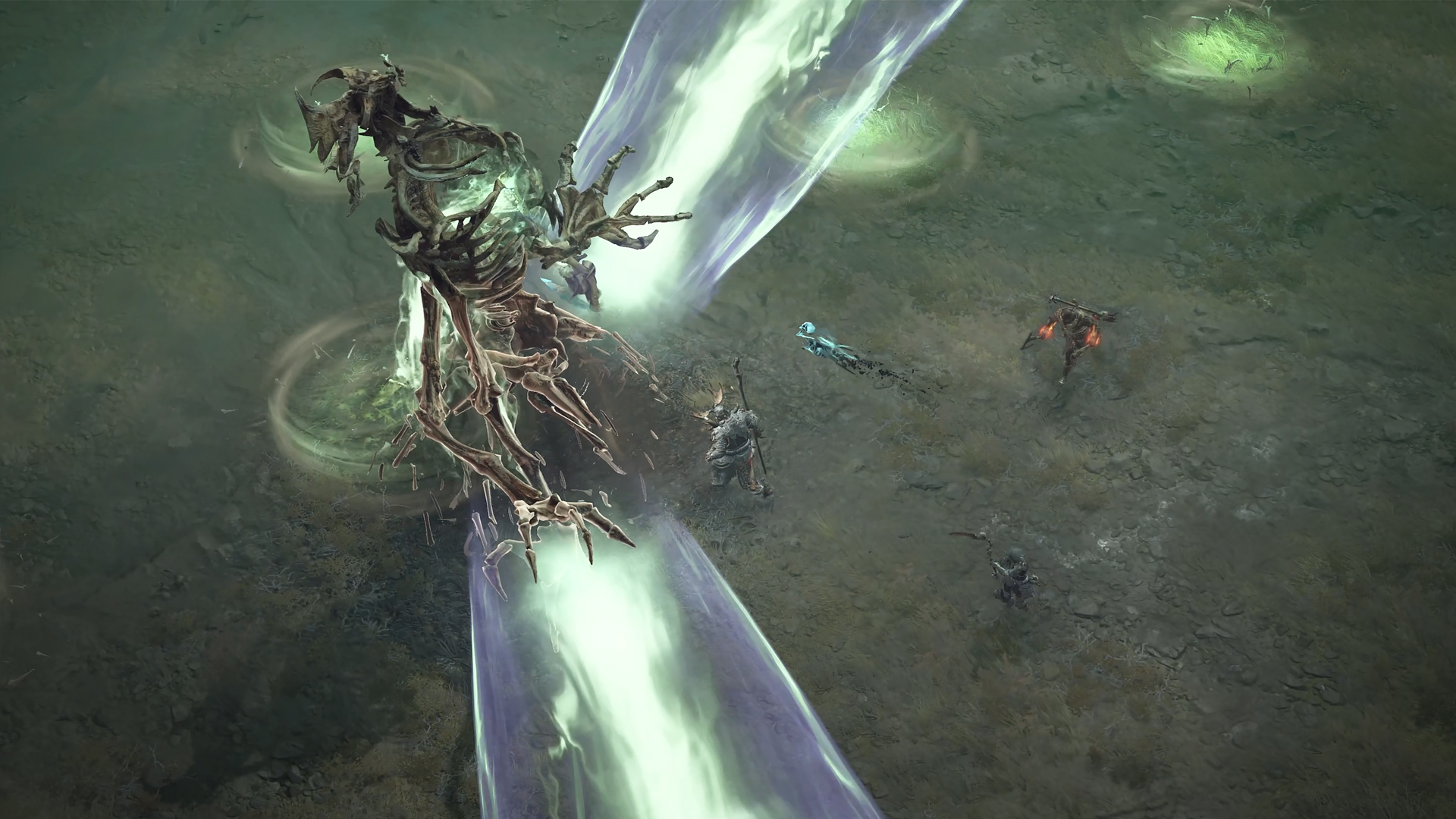
Diablo 4 occupies this really killer ground between the complexity of Diablo 2 and the approachability of Diablo 3. Skill points and assignable attributes are back, allowing for more miniature in class construction, with a respec cost so low that experimentation is always encouraged. Consumable health potions return, necessitating more care in combat, but defeated enemies aren't opposed to refilling your flasks either. Diablo 4 is full of these sorts of smart revisions – small quality of life changes that answer the roar of domineering feedback which has followed this franchise for over a decade.
Naturally, the fundamentals remain largely unchanged. From your isometric perch of a world wrought by the seven armies of hell, the action doesn't look all that dissimilar to past installments. Diablo 4 is still an absurd loot theme park, where character progression is defined less by the choices you make and more by the randomly generated gear that spills out of eviscerated corpses. But perhaps the most impactful shift is the agency Blizzard has injected into loadout management.
"After sacrificing nearly 100 hours of my life to Diablo 4, I've barely scratched the surface of what it has to offer"
Items have magical properties and proficiencies established upon pickup, affording you an opportunity to make quick decisions about your build between bloody bouts with demonic forces. RNG Gods be damned, sockets can be welded onto unique armor, weapons, and accessories without a dice roll, giving you free reign to waste hours min-maxing your stats with gems. Equippables that you are particularly attached to can survive the loot-grind for longer thanks to an enhanced upgrade system, empowering the statistics of your favorite pieces in exchange for a little gold and materials.
When the time comes to part ways with a Legendary, you can strip it of its Aspect and apply those unique passive properties to another item in your inventory; class-specific enhancements can be earned in dungeons too, should you really want to dial in your preferred playstyle. This system grew on me as my nostalgia for the old ways waned – a necessary tool for class definition, particularly as I pressed into more challenging World Tiers and began experimenting with cooperative party compositions.
Weekly digests, tales from the communities you love, and more
It felt counterintuitive to have so much control in the early hours – because what is Diablo, if not an endless pursuit of larger numbers. But this tinge of longevity to gear only emphasizes the strength of each of the five classes, and enhances the overall quality of combat from the beginning of the 30-hour campaign through to the countless hours spent figuring out the particulars of a returning (and more intricate) endgame Paragon leveling system.
Face Your Fears
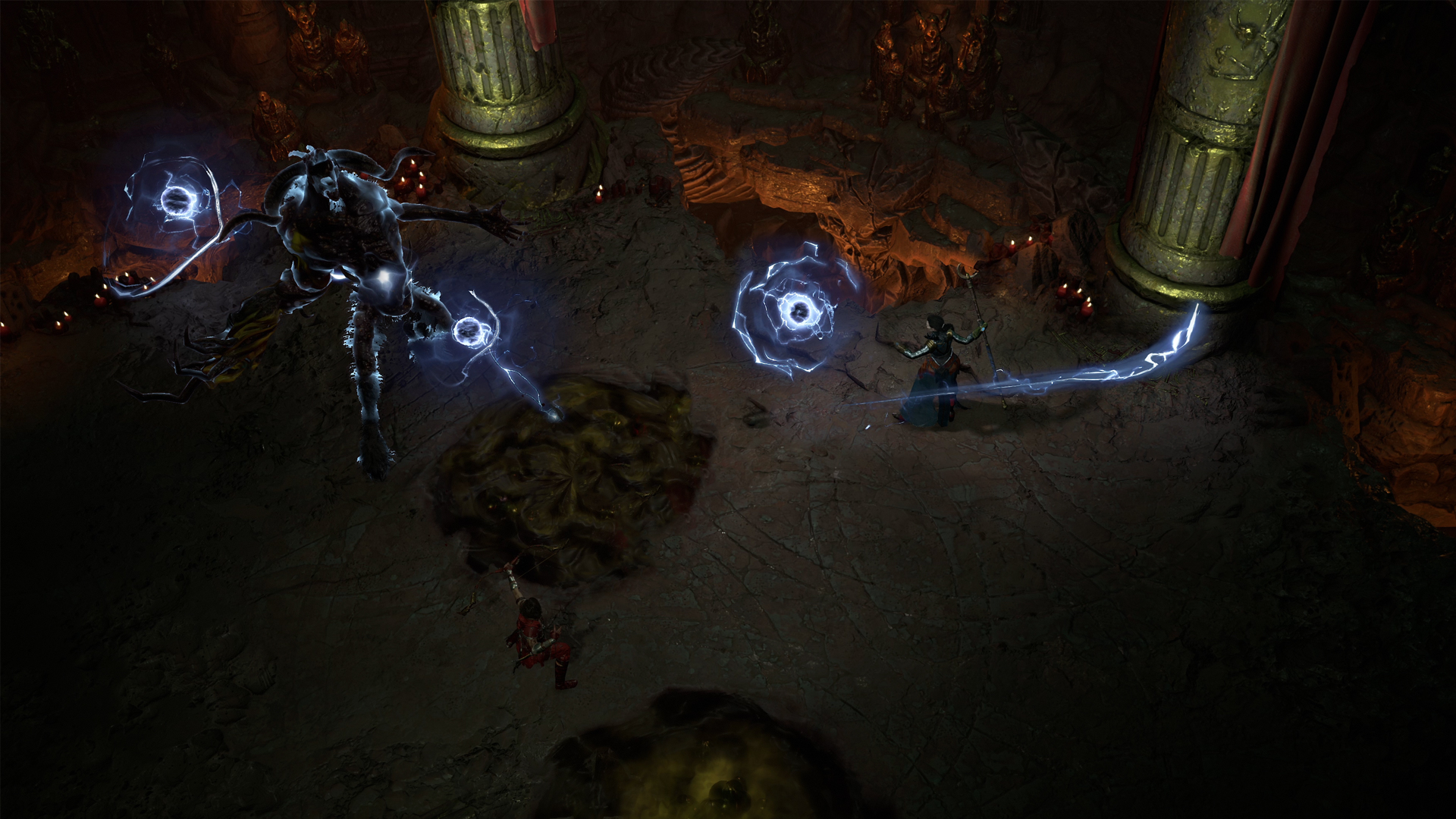
If a mass of interweaving systems represents the spirit of Diablo, and mountains of loot the soul, then combat is the beating heart. And let me tell you, slaughtering demons in Diablo 4 is really bloody good. It's not a radical departure by any stretch of the imagination – click, click, click, until the nightmares are exorcized. But what Blizzard has presented here is a hyperkinetic concoction of the outright carnage of Diablo 3 and the more considered pacing of Diablo 2.
If Diablo 3 could be accused of anything, it's that it leaned too far in the direction of thoughtless, thunderous demon slaying – a cascade of colorful violence to be enjoyed while chatting shit with friends. Where Diablo 4 succeeds is that while it certainly gives each of the classes the tools to dominate waves of enemies with little consternation, you'll need to be more considerate of a variety of external factors. Skill selection, resource management, specializations, and positioning.
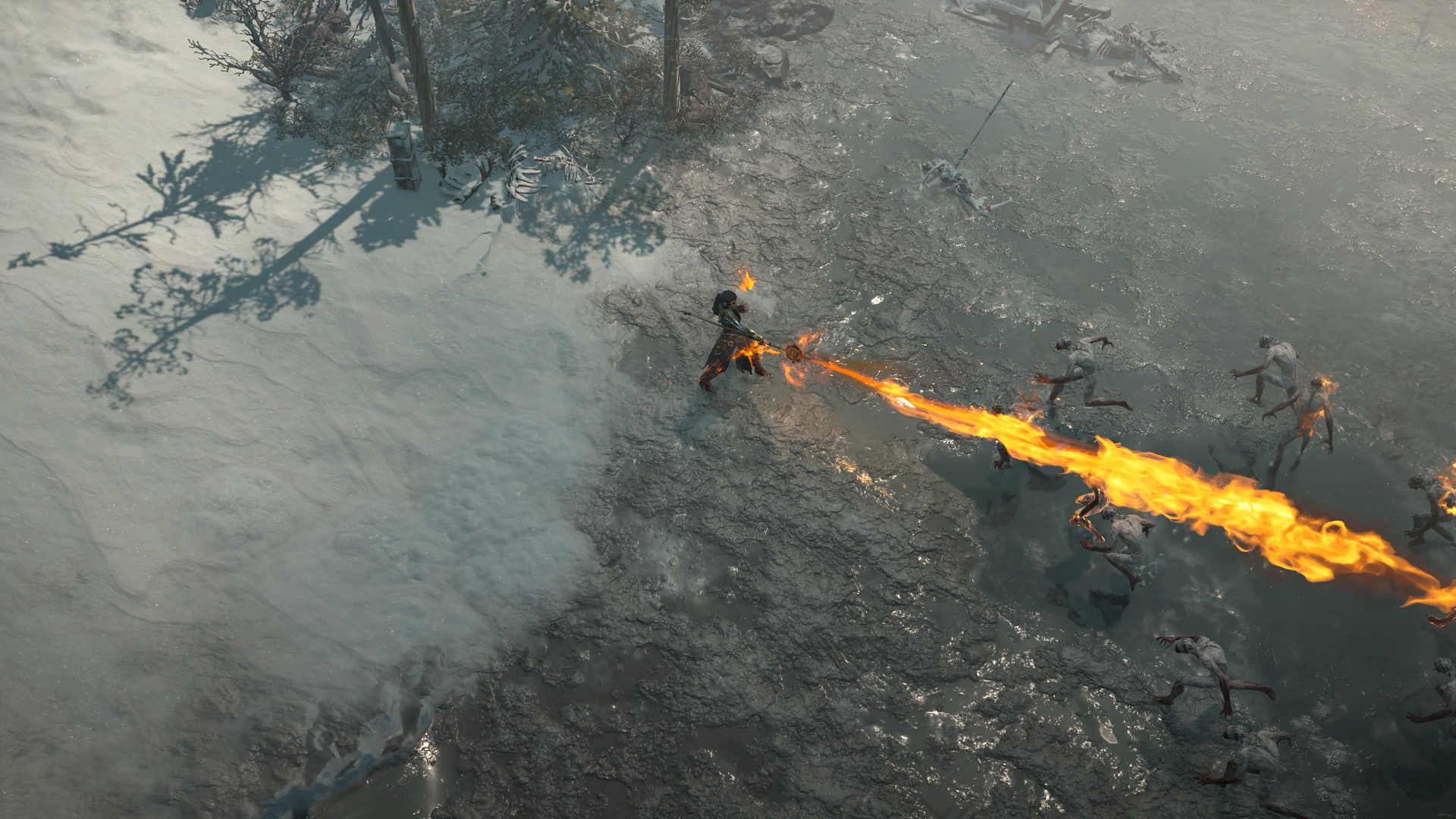
Hero classes are outstanding – defined and potent. The decrepit Necromancer, able to raise an army of the dead while activating daisy chains of exploding corpses. There's the barbaric Barbarian, with their swappable weapons and ability to agro even the largest of lesser evils. You've got your glass-cannon Mage who circumvents issues of survivability by summoning the elements from the heavens. The Rogue is a master of critical damage, darting through shadow with deadly precision, while the Druid can shift their shape to effectively tackle any crowd with ease. No matter your preferred way of slaying, Diablo 4 is only too happy to facilitate.
That's supported by an outrageously in-depth skill tree system. Diablo 4 assigns skill points as you level up – or as you meet certain renown thresholds from exploring Sanctuary; clearing dungeons, hunting Altars of Lilith statues, and completing the hundreds of side-quests which litter the open world. There's little restriction in the ways you can creatively invest in your character or in the combination of abilities you can equip, while branching modifiers can further refine your chosen path. The depth on display through the standard leveling outlay is staggering, with class composition having a real tangible impact on the way your character moves, kills, and survives. When the Paragon board opens up between level 50 through 100, the scope for creative assembly – in tandem with loot collection and gear optimization – is dizzying.
Diablo 4 always provides a wide set of opportunities to succeed. Stuck on a particularly challenging boss battle, stronghold capture, or timed world event? Work out what your build is missing – direct DPS, crowd-control, armor, elemental resistances, and so on – and quickly respec components of the skill tree accordingly. Perhaps you portal back to a town and upgrade your equipment, or reroll a Legendary's attributes to increase specific resistances. Hell, if you're getting truly schooled, temporarily drop down a World Tier for an easier ride (at the cost of less loot and experience), or bring friends into your party to instill some additional dynamics to a battle.
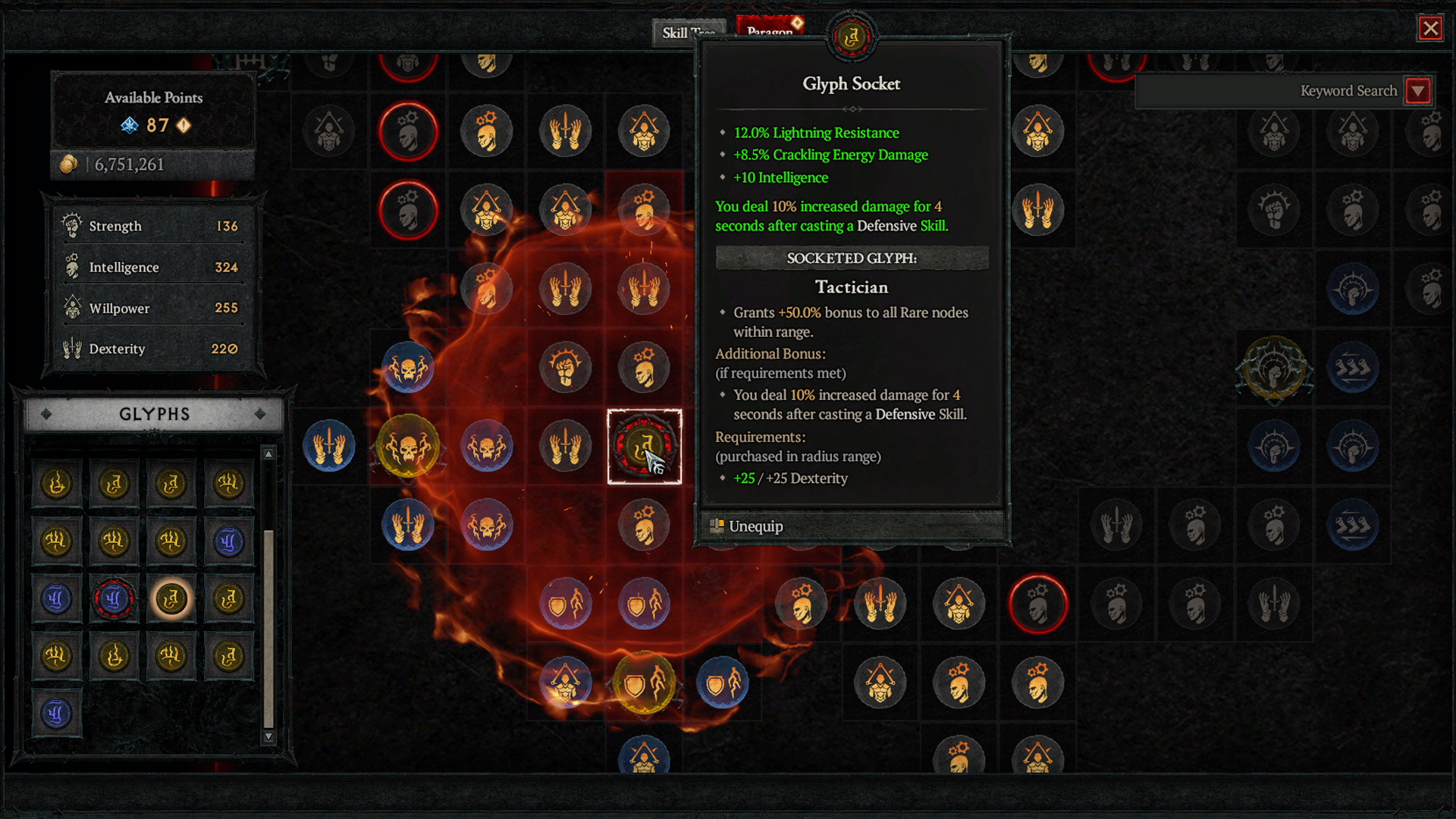
Oftentimes, your ability to succeed in any given encounter will come down to how well you're controlling your character, or managing cooldowns and the unique class-specific resource pools which replace Diablo 3's universal mana. The precision Blizzard has injected into handling is felt most keenly in battles with Boss, Champion, Elite, and Super Unique ranked enemies, instances which demand precise movement and quick reactions. Every class now has a dodge roll as standard, and agility can be greatly enhanced by investing in movement abilities such as Dash, Leap, or Teleport, allowing you an opportunity to more deftly weave through domineering attacks with strict invincibility frames.
While I certainly miss the infinite dodge roll (introduced to Diablo 3 to help facilitate its arrival on console platforms), I understand its exclusion. The introduction of cross-platform multiplayer necessitates a wider balance between PC, PS5, and Xbox Series X players, while an increased array of resources and enhancements to manage reflect the more complex combat parameters. Whether you're running solo or with friends, Diablo 4 asks for more of your attention than its predecessor, and is quicker to punish haphazard reaction, although the focus is always on having the freedom and flexibility to send hundreds of thousands of demons back to hell and have a damn good time while doing it.
Saving Sanctuary
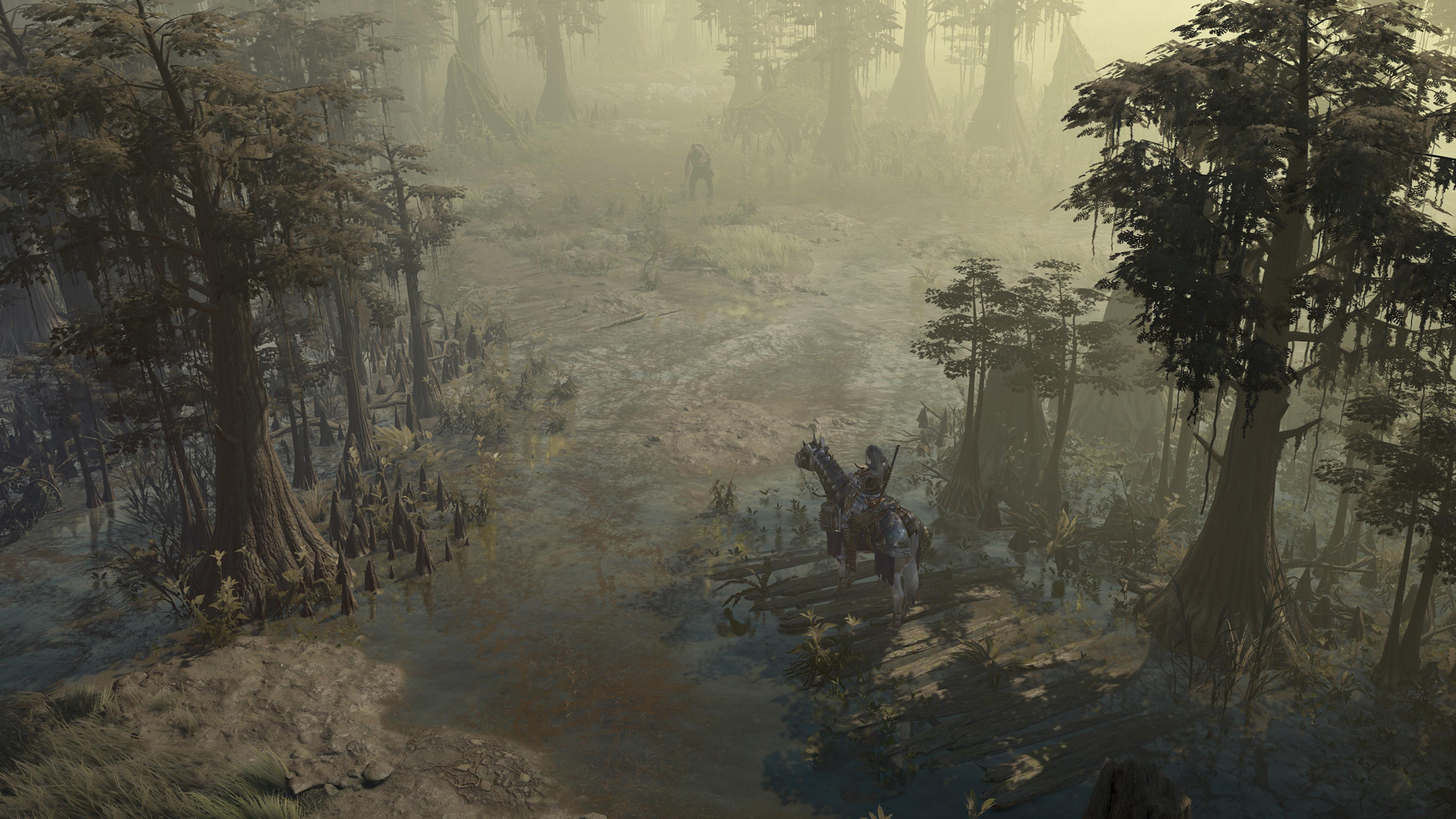
If there was any one area of Diablo 4's design which was going to court controversy, it's Blizzard's decision to transition the action to an authored open-world overworld imbued with MMO sensibilities. A creative challenge which the studio has navigated with deft precision. There's a cohesiveness to the structure of the space, and a coherence to the shifting visual styles which punctuate Sanctuary's five regions – each exuding a distinctive personality.
From the swampy morass of misery to the south and blood soaked glaciers in the northlands, the akrid dunes of despair or countless crumbling cities drowned in blood – it's a true delight to freely navigate this massive space. What's impressive is just how successfully Blizzard has taken learnings from World of Warcraft's evolution over the past 20 years and applied them to Diablo 4's structure in a way which makes sense for this action-RPG. World bosses and limited-time events wash over the world and cause players to converge for short alliances, while the seamless integration of PvP to specific map zones adds an air of danger to exploration. It's always a thrill encountering other heroes, giving you a fleeting opportunity to see how players are making use of their skill trees, enhancements, and equipment outside of defined co-op groupings.
One reason the Diablo combat cycle works as well as it does is because of the slow creep of power it harnesses. You start as a humble wanderer and quickly become a powerful master of reality, ripping through hordes of monsters with ease. In a sense, the decision to introduce level-scaling is strange – enemies, dungeons, and events stay within a power boundary of your character – but I found it to be in inkeeping with the broader fantasy of Diablo 4's story. The world is under siege, after all, and it makes sense that the hell tide is forever rising to combat your attempts to secure regions and push back the demons.
As fantastic as delving into the depths of dungeons is (each imbued with an air of randomization, to freshen repeat visits) and as fun as pursuing the story can be (perhaps the best from Blizzard in the modern era; its cinematic components recalling the vast spectacle of Starcraft 2: Wings of Liberty, or World of Warcraft's The Burning Crusade and Wrath of the Lich King expansions) there's just so much joy in mindlessly seeking distraction. Side-quests are largely plentiful, varied, and well written. Collectibles and crafting-materials are evenly distributed, and what's shocking is that I'm still encountering new enemy variants with so many hours on the clock. Diablo 4 is the sort of game where you can gladly waste away your time and not feel a tinge of guilt about it after.
Hell Raiser
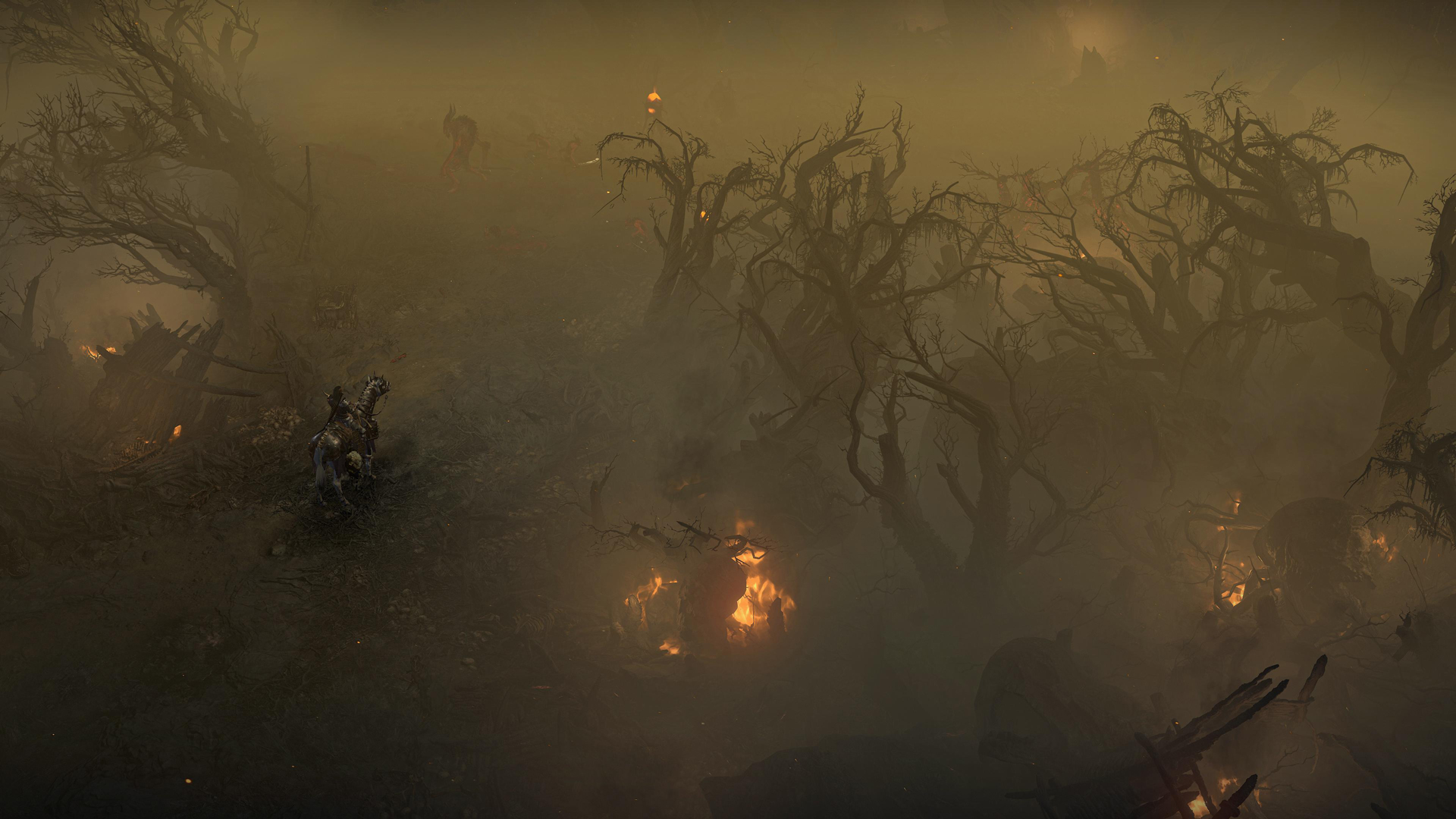
It's impossible to know whether Diablo 4 will survive as a live service in an undoubtedly challenging environment – where more games than ever before are vying for increments of our time. But Blizzard has undoubtedly established strong foundations for future success here. As a solo experience, I know that I've barely scratched the surface, with hundreds (if not thousands) of hours in front of me to perfect five class builds and triumph over the multiple World Tiers of challenge. And as a multiplayer experience, there's a compelling argument to be made for Diablo 4 being one of the finest online games available on modern platforms – there's an elegance to its composition and freedom to its structure which is difficult to dispute.
The ARPG has come a long way since Diablo 2 set the bar for the genre, and since Diablo 3 fractured the playerbase, and there's some out there who will undoubtedly feel as if Diablo 4 hasn't gone far enough in its expansion – that its class-balance and endgame could be more distinct, particularly given the strength of contenders like Grim Dawn, Pillars of Exile, and Torchlight 2. But the truth is, there's simply nothing quite as entertaining as Diablo 4 when it's firing on all cylinders.
Even now, I couldn't tell you why Diablo 4 works – not really. I could point to the bleak gothic artistic direction and stunningly regional diversity of its open world; the hauntingly atmospheric soundtrack and hyper-refined UX design; the slick 60 frames-per second performance and seamless blurring of lines between single and multiplayer components.
But it's something deeper than that. It's the compulsion that drives the heart of the experience. That gameplay loop which necessitates such simple, repetitive, attention-dominating action. The sort which offers instant fun from sign-in, persistent challenge in a seamless world, approachable complexity with dizzying choice – a video game which wields an uncanny ability to draw out an intoxicating, impulsive drive for experimentation. Diablo 4 is a triumph that will decimate your free time.
Diablo 4 was reviewed on Xbox Series X, with code provided by the publisher.
More info
| Genre | Action RPG |

Josh West is the Editor-in-Chief of GamesRadar+. He has over 15 years experience in online and print journalism, and holds a BA (Hons) in Journalism and Feature Writing. Prior to starting his current position, Josh has served as GR+'s Features Editor and Deputy Editor of games™ magazine, and has freelanced for numerous publications including 3D Artist, Edge magazine, iCreate, Metal Hammer, Play, Retro Gamer, and SFX. Additionally, he has appeared on the BBC and ITV to provide expert comment, written for Scholastic books, edited a book for Hachette, and worked as the Assistant Producer of the Future Games Show. In his spare time, Josh likes to play bass guitar and video games. Years ago, he was in a few movies and TV shows that you've definitely seen but will never be able to spot him in.
